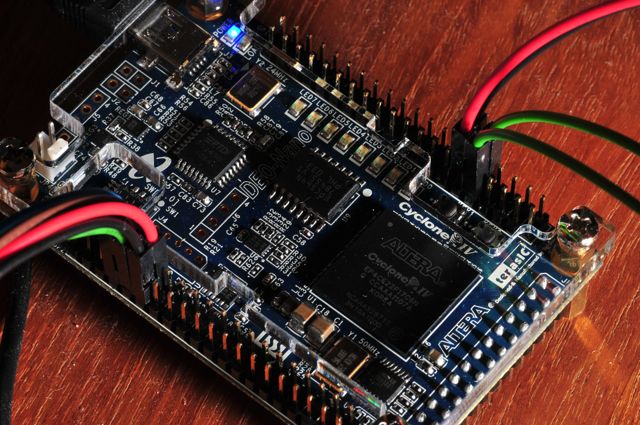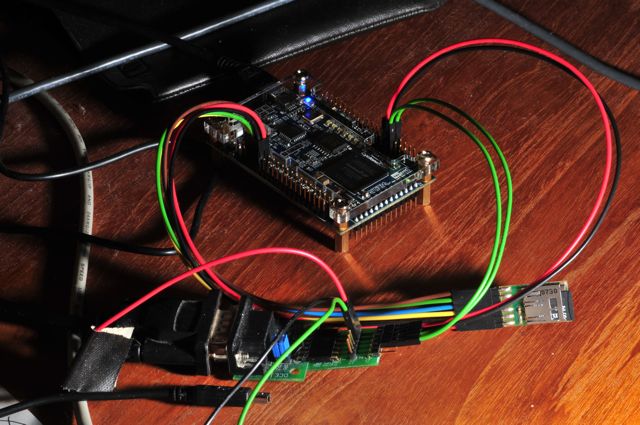DE0-Nano has a decent size Cyclone-IV FPGA, a generic SDRAM memory, some tiny buttons and leds, and a lot of header pins all on a very small board. Oh, and an acceleration sensor and an 8-port ADC as well. As with all Terasic stuff, it is very beautifully made, neatly finished with a plexiglass cover.
For the past couple of years DE0-Nano has been my main lab board – it’s well supported by the latest version of Quartus, and it feels as if the compiler runs faster for it than for newer hardware. It’s a bit finicky maybe to hook up the pins you need for serial ports, the sd card and such – but I made a simple pcb to connect the most obvious that I can plug in on top of the board. And I have a much more complicated pcb that has a miniature version of the PiDP console on it too – sadly it uses a couple of components that have become unobtanium. There is a redesign coming up, but no timelines on that yet.

